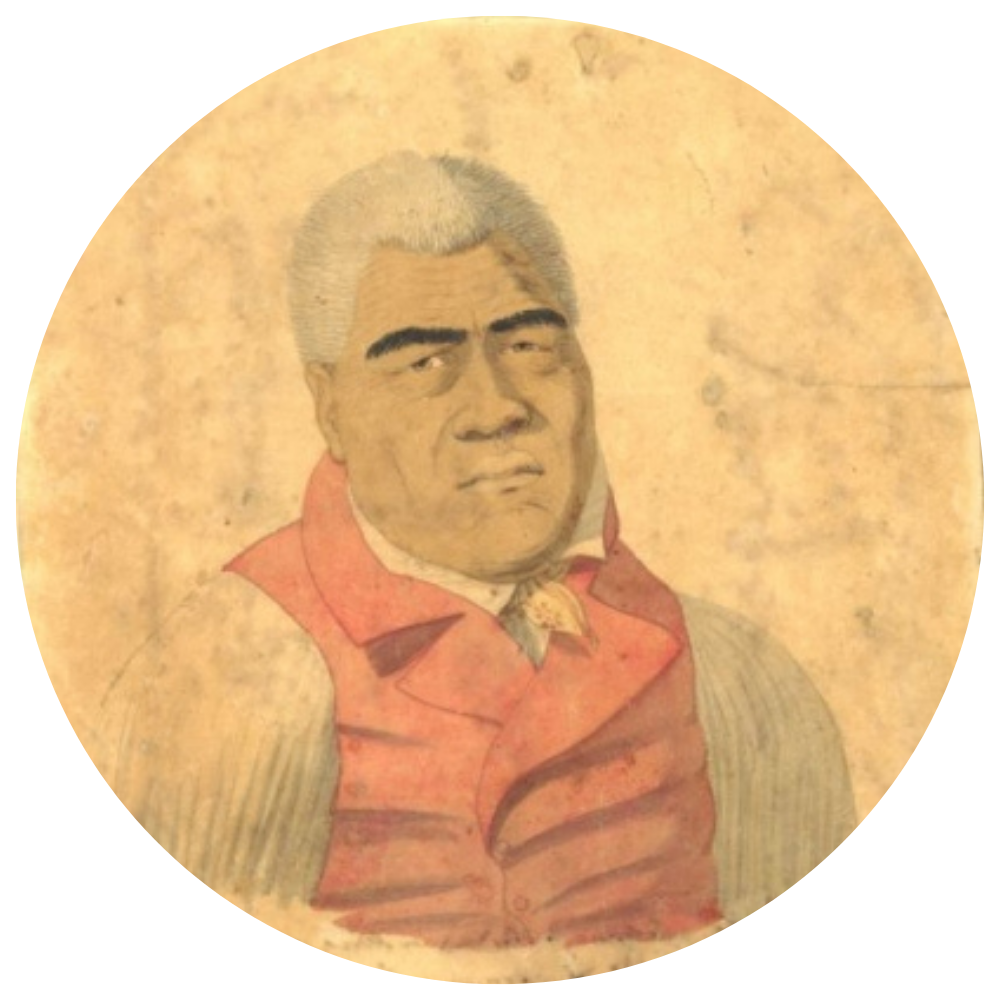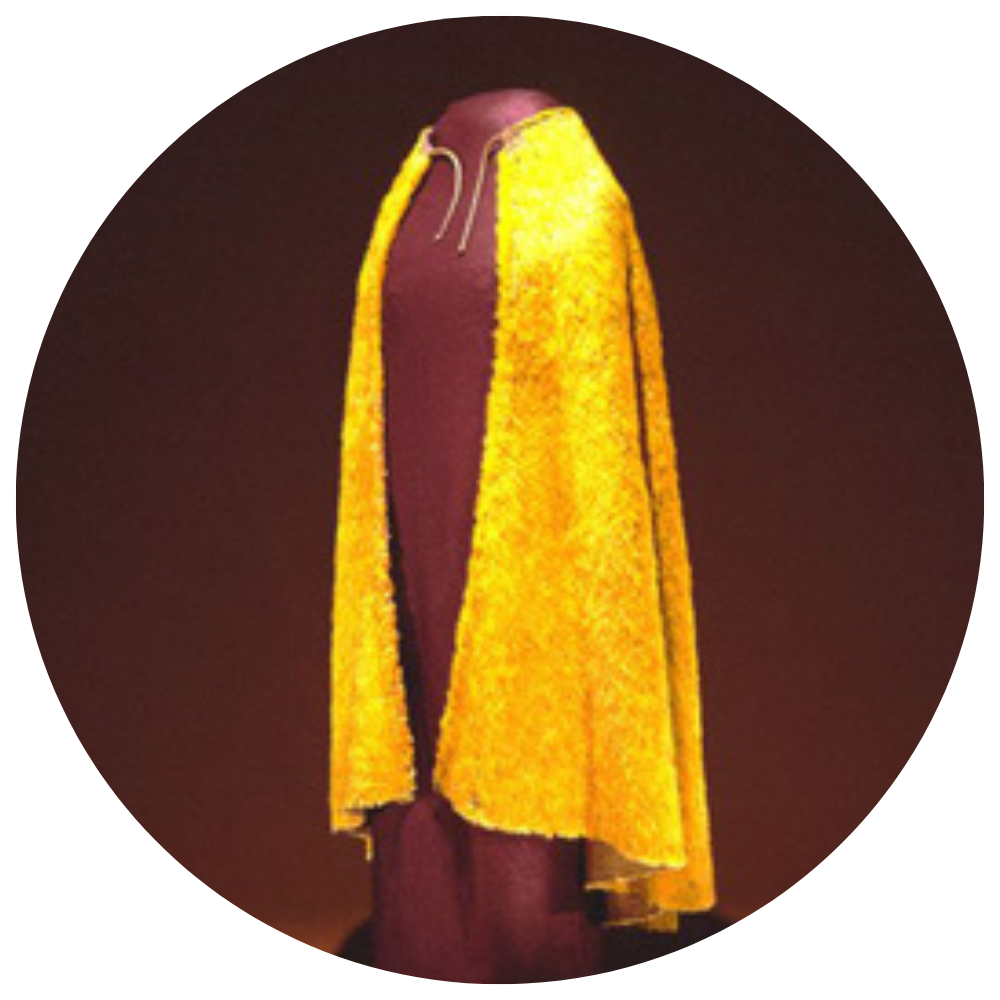Mahiʻole and ʻAhuʻula of Kaumualiʻi

With the death of the powerful Māui warrior, Kahekili, and the later victories of Kamehameha over Kahekili’s son Kalanikūpule, the kingdoms of Māui and O‘ahu fell to Kamehameha. Having earlier managed to unite Hawai‘i island under his rule, all that was left to complete the unification of the islands was the acquisition of Kaua‘i. This island however, would prove very difficult to obtain.
Kaumuali‘i had become ruling chief of Kaua‘i upon the death in battle of his father Kā‘eokūlani. Although this famous Kaua‘i chief had been defeated by Kalanikūpule, the battle had taken place on the plains of ‘Ewa on O‘ahu. This meant that Kaumuali‘i was able to retain power at home on Kaua‘i.
There are several versions of the troubles that Kamehameha and his chiefs had in bringing the island of Kaua‘i under his rule. Famous mo‘olelo speak of his massive Peleleu fleet of double-hulled war canoes being turned back mid-channel by a violent storm. Accounts also speak of Kamehameha’s later war plans being set aside by an onslaught of ‘Ōku‘u (perhaps dysentery) that sickened him and killed many of his high chiefs and counselors. Several years passed without this final victory for Kamehameha.
Eventually negotiations succeeded where warfare had failed and an agreement was reached between the two powerful rulers. Kamehameha called for a meeting of the two ali‘i nui. Kaumuali‘i was unsure at first, having remembered Keoua’s fateful death upon going to met his brother Kamehameha at Pu‘ukoholā. He did relent however, and finally met face-to-face with Kamehameha; union was achieved. Kaumuali‘i was gifted with war canoes, ‘ahu‘ula, and other symbols of goodwill. After the death of Kamehameha I, Kaumuali‘i would be brought into the court at Lāhainā and in 1822 was taken by Kamehameha’s wahine Ka‘ahumanu as a husband. He was buried at the sacred mausoleum at Moku‘ula .
This mahi‘ole and ‘ahu‘ula held in the collection of the Bernice Pauahi Bishop Museum are believed to be a gift from Kamehameha I to Kaumuali‘i. The mahi‘ole was preserved in the home of the Reverend Samuel Whitney of Kaua‘i and eventually acquired by the museum. It is the only feather helmet whose former ownership is definitely known.*
* Pukui, Mary Kawena. `Olelo no`eau: Hawaiian Proverbs & Poetical Sayings. Bernice P. Bishop Museum special publication 71. no. 2440, p266. Honolulu: Bishop Museum Press, 1983.
Location: Bishop Museum




